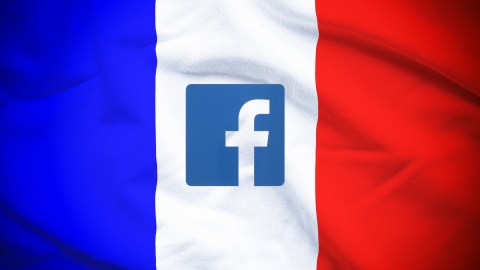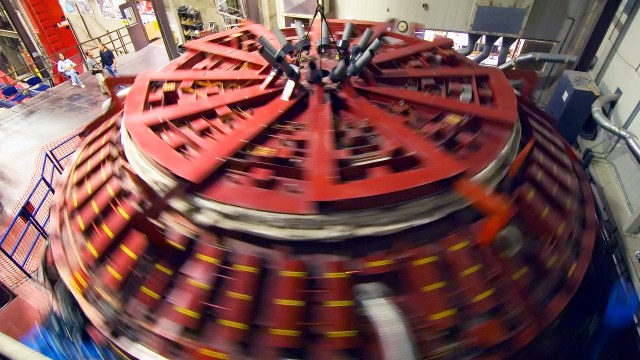How Social Media Helps Us in Emergencies

Soon after the devastating terror attacks in Paris on Friday that left at least 129 people killed and countless others wounded, Facebook launched a “Safety Check” tool that allowed users located in Paris to identify themselves as “safe.” Their Facebook friends then received notifications that they were unharmed.
Facebook created this service after the Nepal earthquake earlier this year. “This morning we activated Safety Check for people affected by the earthquake in Nepal. It’s a simple way to let family and friends know you’re okay,” Mark Zuckerberg wrote on his Facebook page after the Nepal disaster. “If you’re in one of the areas affected by the earthquake, you’ll get a notification asking if you’re safe, and whether you want to check on any of your friends.” The service can be linked to geo-location of the user and an additional feature allows individuals to “mark safe” others as safe too.
In times of emergency, many of us reach for our phones. I remember the day of the 9/11 attacks where many in the U.S. could not place a call as the circuits were overloaded with individuals trying to reach their loved ones. Then in 2011, a magnitude 5.9 earthquake hit Virginia, and social media demonstrated its true power. Seconds after the first tremors were felt, Virginians took to Twitter to express their reactions. Almost immediately those tweets were read by others in the New York area who then felt the quake 30 seconds later.
The US Geological Survey (USGS) has begun to use Twitter data to predict earthquakes. The USGS National Earthquake Information Center processes information in real time from about 2,000 earthquake sensors, most of them in the United States.
“Weirdest moment: Seeing the people I’m following in DC tweet “earthquake” seconds before I felt it here in NYC,” wrote one Twitter user. “Haha! I was able to read about the earthquake on Twitter right before I felt it! I love living in the future,” said another.
In fact, the US Geological Survey (USGS) has begun to use Twitter data to predict earthquakes. The USGS National Earthquake Information Center processes information in real time from about 2,000 earthquake sensors, most of them in the United States. That leaves most of the world without USGS earthquake sensors. But, there are lots of folks who use Twitter. So, the USGS decided to determine if Twitter could be used to detect earthquakes. They found that it was surprisingly effective. In fact, as reported by Twitter they detected the 2014 earthquake in Napa less than 30 seconds after it began:
“The 2014 earthquake in Napa was detected by USGS in 29 seconds using Twitter data, likely due to the tech-savvy population that dominates the area. (Origin time was 2014-08-24 10:20:44 UTC and Twitter data detection time was 2014/08/24 10:21:13.)”
And using social media to inform the public of disasters is equally important. According to The Pew Research Center, a quarter of Americans used a social networking site to obtain information related to the Boston Marathon bombing attacks. Researchers from a National Science Foundation-funded program called Project HEROIC studies how Twitter is used during disasters. Their focus is to help inform policy around best practices in using social media during these events. In the week following the Boston attacks, for example, Project HEROIC found that the number of followers on Boston Police Department’s Twitter account increased by 500 percent, while the city’s public information officer saw a 2,000 percent increase in followers as people sought out information. Principal investigator for the program, Carter Butts, says that this new form of communication is “really an important emerging communication channel for rapid notification and dissemination of information.”
Like the Twitter user above mentioned, I love living in the future. We are lucky to have tools and technologies that keep us informed about the world around us, while also letting us notify others of our own health and safety.
After Hurricane Sandy hit, PSE&G, the largest utility company in New Jersey, staffed up their social media teams to notify customers of the locations of tents and generators. “At one point during the storm, we sent so many tweets to alert customers, we exceeded the [number] of tweets allowed per day,” said PSE&G’S Jorge Cardenas, vice president of asset management and centralized services.
Whether it’s using social media to let others know that you’re safe or using it to predict earthquakes, the tools and technologies we have available to us through our phones provide a new, important way in which to increase the safety and security of those around us. After the Paris attacks, many of us took to social media to determine the status of our friends and family, ensuring that our loved ones were safe. At the same time, social media provided an outlet for the anger, dismay, sadness, and loss many of us experienced.
Like the Twitter user above mentioned, I love living in the future. We are lucky to have tools and technologies that keep us informed about the world around us, while also letting us notify others of our own health and safety. Our mobile phones offer more than just Candy Crush and Clash of Kings. They are vital to the safety and security of our families, friends, and colleagues and I’m happy we have them.
—
Jason is Chief, Innovation for Thomson Reuters Special Services where he facilitates, oversees, and executes long-term solutions to emerging technology challenges. He works closely with governments, the private-sector, and non-governmental organizations to identify opportunities that will shape the future. The views expressed are his alone and do not necessarily represent the views of Thomson Reuters or Thomson Reuters Special Services.





